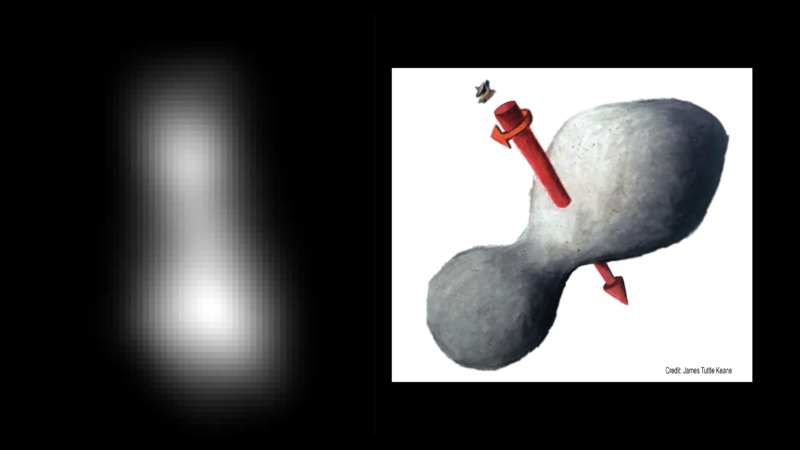New Horizons has a successful flyby of the Kuiper Belt’s bowling pin

Enlarge (credit: NASA/JHUAPL/SwRI; sketch courtesy of James Tuttle Keane)
While people around the world were celebrating the arrival of 2019, people at the Johns Hopkins Applied Physics Laboratory in Maryland were hard at work. Billions of miles away, the New Horizons probe was flying past Ultima Thule, a small object in the Kuiper Belt. By Tuesday morning, the hardware had sent back a status report that indicated the flyby went as planned, and New Horizons now has lots of data from Ultima Thule that it will slowly send back to Earth over the coming months. (As explained by the BBC, the enormous distance between Earth and New Horizons means the probe's 15-watt transmitter can manage a data transmission rate of about 1 kilobit per second.)
While we don't yet have any of the data that will tell us details about this relic of the Solar System's formation, images taken during the approach solved one of the mysteries that had arisen as New Horizons closed in. But one of the key questions-is Ultima Thule one object or two?-remains unanswered.
Prior to New Horizons' arrival at Ultima Thule, researchers obtained images as it eclipsed a background star. These suggested the body was oblong, rather than spherical. Yet, as the spacecraft got closer, it failed to detect any significant changes in brightness, as you'd expect if an oblong body was rotating.
Read 3 remaining paragraphs | Comments